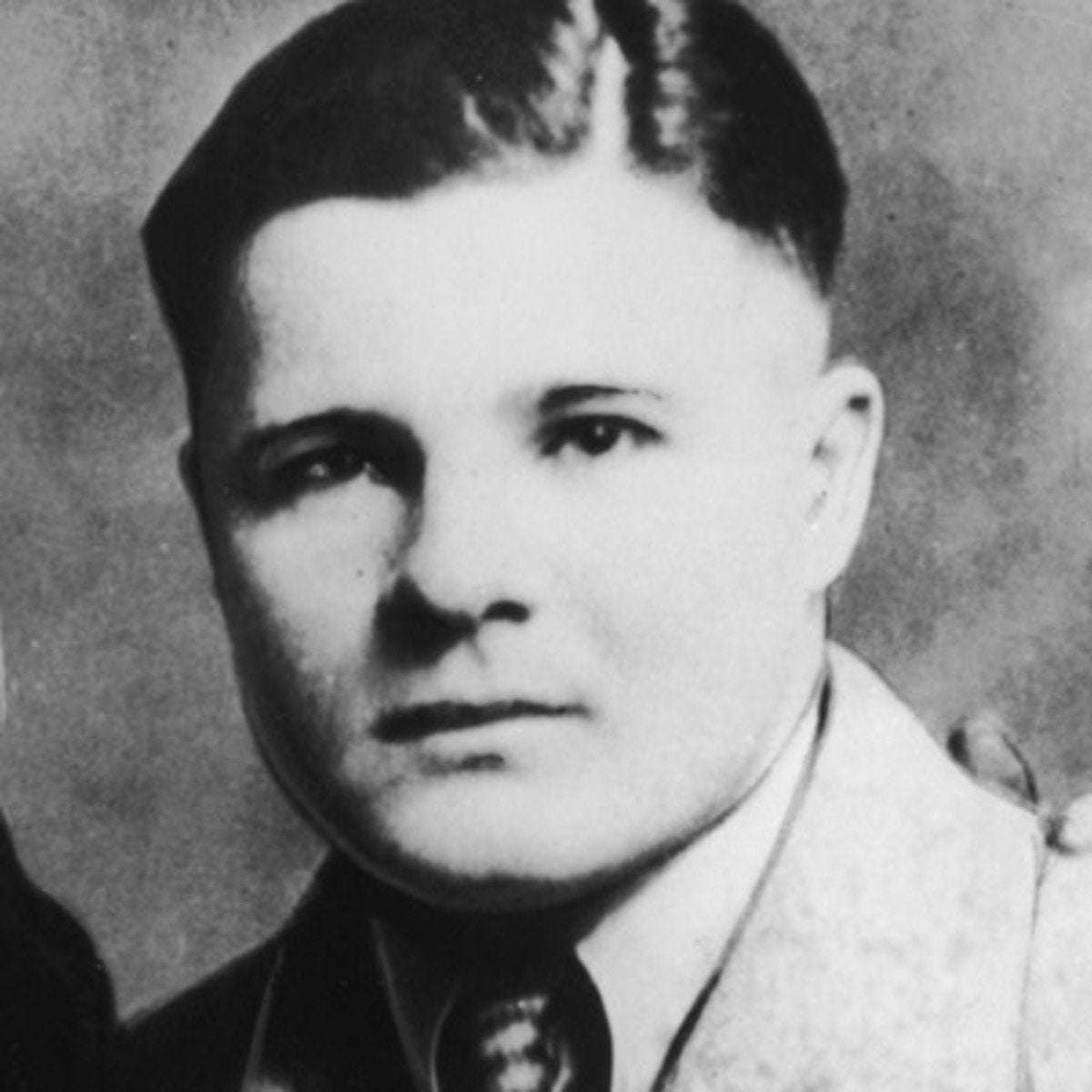At one point dubbed "Public Enemy No. 1," Charles "Pretty Boy" Floyd was best known for his constant run-ins with police and violent bank robberies.
Who Was Charles "Pretty Boy" Floyd? Charles "Pretty Boy" Floyd was known for his constant run-ins with police and violent bank robberies. Floyd was arrested for a payroll robbery in the mid-1920s and went on to rob numerous banks after his release. He was often viewed favorably by Oklahoma locals, who called him "the Robin Hood of the Cookson Hills." After being accused of taking part in the Kansas City Massacre, Floyd was gunned down and killed by FBI agents in 1934.
Early Life Charles "Pretty Boy" Arthur Floyd was born in Adairsville, Georgia, on February 3, 1904, one of many children. His family soon after moved to Oklahoma, where they owned a farm and were extremely poor. Floyd would come to earn the nickname "Choc" due to his appreciation of Choctaw beer. He turned to crime to escape the poverty of the Depression era, which hit farmers in the "Dust Bowl" especially hard. At 20 years old, Floyd married Ruby Hardgraves; they had a son, Charles Dempsey "Jack" Floyd, who was born while Floyd was serving a four-year prison sentence for a robbing a Kroger store payroll delivery in St. Louis, Missouri. Hardgraves divorced Floyd during the latter part of his imprisonment, though the two would rekindle their relationship in the early 1930s. After serving time, Floyd also received another nickname, "Pretty Boy," from a girlfriend at a Kansas City boardinghouse, though he came to hate the moniker.
A Life of Crime Upon his release, Floyd was thought to have killed a man who was accused, but acquitted, of killing his father. He became a hired gun for bootleggers along stretches of the Ohio River. Known for his reckless use of a machine gun, Floyd began robbing banks in Ohio with a group of gangster accomplices and soon moved on to other territories. During his crime spree, bank insurance rates in Oklahoma were reported to have doubled. He became popular with the public by allegedly destroying mortgage papers at many of the banks he robbed, liberating many debt-ridden citizens. (These acts were never fully verified and may in fact be myth.) Known for sharing money he'd lifted with others, he was often protected by Oklahoma locals, who dubbed him "Robin Hood of the Cookson Hills."
Kansas City Massacre One of the more memorable events that Floyd was accused of taking part in was the Kansas City Massacre. It was reported that Floyd, along with Vernon Miller and Adam Richetti, attempted to prevent their friend—Frank Nash—from being returned to a U.S. penitentiary located in Leavenworth, Kansas. In an elaborate plot to free Nash, the gang proceeded to release fire on officials who were guarding the convict on the morning of June 17, 1933, at the Union Railway Station in Kansas City, Missouri. Nash got caught in the crossfire and died, along with two officers, a police chief and an FBI agent. Floyd himself denied taking part in the events; a biographer later called into question Floyd's presence at the massacre while the FBI, via its website, continues to assert his involvement.

Juancheez on March 13rd, 2020 at 20:07 UTC »
All I've learned is that a lot of people's grandmas were more than willing to let Floyd in
SmallsTheHappy on March 13rd, 2020 at 17:04 UTC »
Ned Kelly used to pay the people he held hostage when holding up banks.
baconOspam on March 13rd, 2020 at 17:02 UTC »
He's a legend of sorts to my family.
My Native American great3-4 grandma had him stay at her house as a guest and she read his tea leaves/coffee grounds. He left her $20 when he left which was more money than she had ever seen in her life at that point.